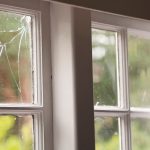There’s a dark side to fair summer weather – heavy storm clouds, often when we least expect them, that bring torrential rain falls and wreak havoc on vacation plans, roadways, and roofs.
While having a leak doesn’t necessarily mean you’ve got a roof replacement in your future, some leaks warrant more urgent attention than others. Sometimes it’s hard to know the difference, but here are a few tips on what to look for when your roof is leaking, and when you should give your roofing contractor a call.
You can do it yourself…
First things first. For an active leak, catch the downpour with a bucket or container beneath to limit the damage of items in the path of the leak, and then start your Clean Up. Wood, laminate, or vinyl tile flooring, furniture, and fabrics are all susceptible to splitting or can warp and lift from water damage, but even carpet needs to be dried out carefully and thoroughly to prevent the growth of harmful black mold.
Once the weather has cleared up, head to the roof to Perform a Basic Visual Inspection. You’re looking for obvious sources of standing or pooling water. Often, these problems can be fixed by simply checking and clearing your eavestroughs and downspouts of leaf litter or other debris that might be clogging them, impeding the smooth flow of water off the roof and away from the house.
Be on the lookout for missing shingles or exposed roofing material. Damage to this protective layer could create an access point for water – even from a relatively light rain fall – to enter your home. Not every leak is directly below the water’s point of entry either. Roof leaks can “travel”, meaning water can run down the length of a beam or other material to a second point where it pools and causes a leak. Inspect the area around the point of access carefully for evidence of travelling.
But you may need an expert.
Not every leak is the result of a clogged eavestrough of downspout. Some leaks occur where roofing material or flashing around chimneys, vents, or other projections has become worn or damaged. Inspect the Roofing Material and Flashing for obvious signs of wear and tear. If the flashing is in poor condition, it may need to be replaced. If the sealing around the flashing is damaged, a generous application of roofing tar may be all you need to plug up the leak.
Since roof leaks often develop over time, inspect your attic for Hidden Damage the leak may have caused. Wet spots on roof planks or panels, discoloured wood, damaged OSB panels, strange odours or dirt in the insulation are all signs of an unchecked leak. Inside your home, be on the look out for bulges in the ceilings or walls, peeling paint, or badly cracked plaster or wallboard.
Are you experiencing a pest infestation? Ants and other pests find wet wood a great place to build a nest. You’ll need an exterminator to rid your house of bugs, but the only way to keep them from coming back is to remove the wood altogether.
If you aren’t sure what you’re looking at, or even if your worried there’s more damage than you can see, double check your insurance and call a roofing contractor. A certified contractor will inspect the roof and area for water damage and will be able to assess the amount of repair necessary or if it needs to be replaced altogether.
George Kent offers complete roofing systems that feature leak barriers, deck protection, proper ventilation and insulation, and roof inspections. Our certified Master Elite contractors are committed to ongoing professional training to ensure a quality installation, every time. Because of our unique factory-certified status, a George Kent roof is eligible for special warranties, all backed by our manufacturer, and we provide a Lifetime Warranty on material and labour. Concerned about a leaky roof? Contact us today to request a quote.





